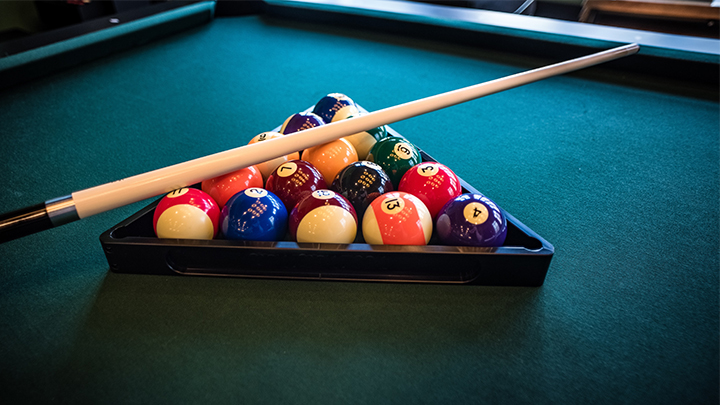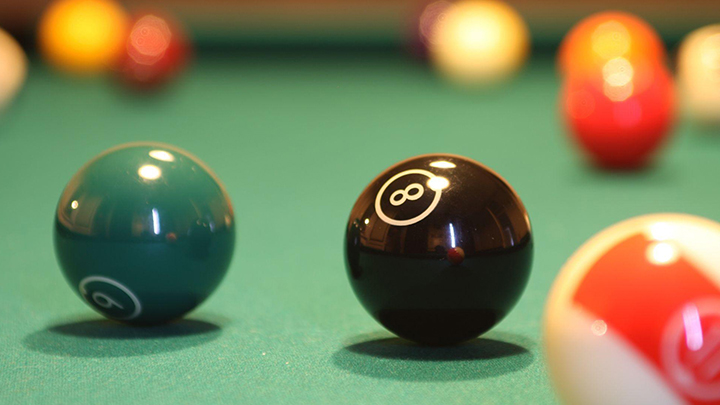How to Choose the Right Pool Cue Stick
Selecting the right pool cue stick is essential for any player looking to enhance their performance and comfort on the table. Whether you’re a beginner or an experienced player, the right cue stick can significantly affect your control, accuracy, and overall enjoyment of the game. This guide will walk you through the factors to consider when choosing the ideal pool cue stick for your playing style.
1. Cue Stick Weight
The weight of a cue stick is one of the most important factors in choosing the right one. Pool cue sticks typically range from 17 to 21 ounces. The weight you choose should depend on your playing style and personal preference:
Lightweight Cues (17-19 ounces): Lighter cues are ideal for players who prefer finesse and quicker movements. They allow for more precise control over the cue ball and are often favored by players who focus on technique and spin.
Heavier Cues (19-21 ounces): Heavier cues are better for players who prefer power shots and a more solid feel. They can help generate more force in shots but may be harder to maneuver for some players.
It’s recommended to start with a 19-ounce cue, which is a common middle ground. However, experimenting with different weights will help you determine which one feels the most comfortable and effective for your playing style.
2. Cue Stick Length
The standard length for most pool cue sticks is 58 inches. However, cue stick length can be adjusted depending on the player’s height and personal preferences:
Standard Length (58 inches): This length is typical for adult players of average height.
Shorter Cues (52-56 inches): If you are shorter or need more control, a shorter cue might be more comfortable and easier to maneuver.
Longer Cues (60 inches or more): Taller players or those seeking additional reach might benefit from a longer cue.
When choosing the right length, it’s important to ensure that the cue feels balanced and allows for smooth, controlled strokes.
3. Cue Stick Material
The material used for the cue stick's shaft and butt (the handle section) can greatly affect its feel, performance, and durability. Common materials include:
Wooden Cues: Traditional wooden cues are the most common and popular choice among players. They offer a good balance of durability, feedback, and control. The most common types of wood used are maple, ash, and rosewood. Higher-quality cues often feature exotic woods for better performance and aesthetics.
Composite and Fiberglass Cues: These cues are made of synthetic materials like fiberglass or carbon fiber. They tend to be more durable and resistant to warping, making them a good choice for players who need a low-maintenance cue. However, some players prefer the feel of a wooden cue for better feedback and control.
When selecting the material, consider how it feels when you play. Wooden cues are generally preferred for their traditional feel, but composite cues may offer better durability.
4. Cue Stick Grip
The grip on your cue stick is crucial for comfort and control. A well-designed grip will help you maintain a steady hold, especially during longer games. There are several types of grips to consider:
Leather Wrap: Leather wraps are a popular choice for high-end cues. They provide a smooth, comfortable grip and can absorb moisture, making them ideal for extended play.
Rubberized or Synthetic Wrap: These wraps are commonly used in mid-range cues. They provide a good grip and are often more affordable than leather.
No Wrap: Some players prefer a cue with no wrap, which provides a direct connection with the wood. While this offers a more natural feel, it can be slippery during long sessions.
When selecting a grip, make sure it feels comfortable in your hand and provides the necessary control to execute precise shots.
5. Cue Tip
The tip is where the cue sticks make contact with the ball, and it plays a crucial role in the amount of control you can apply. Cue tips come in various hardness levels, each affecting gameplay:
Soft Tips: Soft tips are preferred by players who like to apply more spin and control on the cue ball. They offer more grip but can wear down more quickly.
Medium Tips: Medium tips strike a balance between spin control and durability. They are suitable for most players and are commonly found on intermediate cues.
Hard Tips: Hard tips are more durable and are typically used for power shots. They are ideal for players who want more accuracy and less spin but tend to wear down slower.
When selecting a cue tip, consider your style of play. If you like to play with a lot of spin and finesse, a soft tip may suit you best. If you prefer power shots and durability, a harder tip might be more appropriate.
6. Joint Type
The joint connects the shaft and the butt of the cue stick. There are several types of joints, and the right one can affect the cue’s playability:
Screw-On Joints: This is the most common joint type. The shaft and butt screw together, offering a solid connection with minimal movement.
Quick-Release Joints: These joints allow for quicker assembly and disassembly of the cue, which is convenient for players who need to transport their cue frequently.
Some players prefer a certain joint type because it affects the feel of the cue. Experimenting with different joint types will help you find the one that provides the best feedback and playability.
7. Brand and Price
When choosing a pool cue stick, brand reputation can be an indicator of quality. Established brands like McDermott, Predator, Lucasi, and Meucci are known for producing high-quality cues that deliver excellent performance. However, there are also affordable brands that offer good-quality cues for beginners and intermediate players.
While price should not be the sole factor, it is important to remember that a higher price often reflects better craftsmanship, materials, and performance. That being said, there are excellent cues available at various price points, so it’s important to find the best value for your budget.
8. Test the Cue
Finally, the best way to choose a cue is to test it. If possible, visit a local pool hall or billiards store where you can try out different cues. Pay attention to how the cue feels in your hand, how it balances, and how it impacts your shot. It’s important to find a cue that feels comfortable and suits your playing style.
Conclusion
Choosing the right pool cue stick involves considering factors like weight, length, material, grip, tip hardness, and joint type. By understanding these key elements and testing different options, you can find the cue that best matches your playing style and enhances your performance. Whether you're a beginner or a seasoned player, the right cue can make all the difference in your game, providing better control, comfort, and overall enjoyment.



